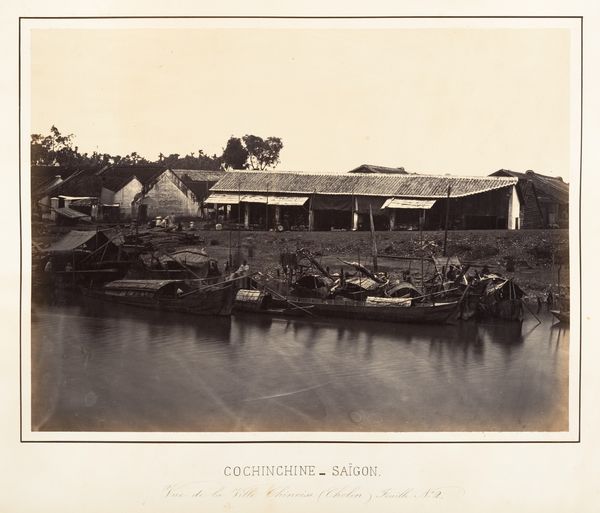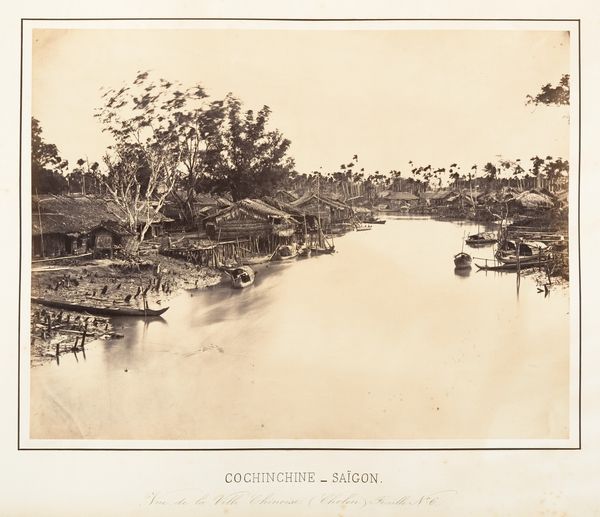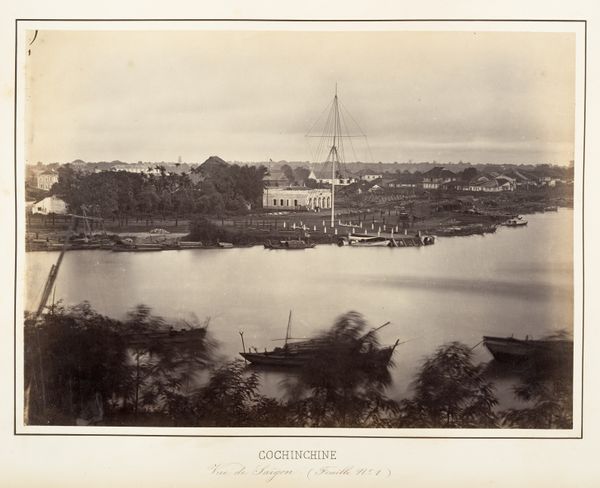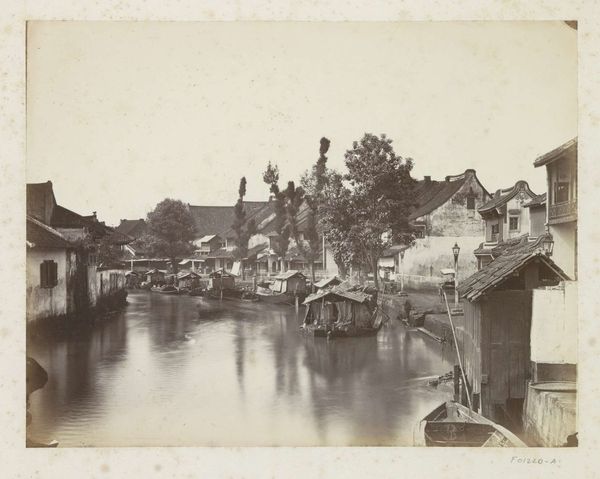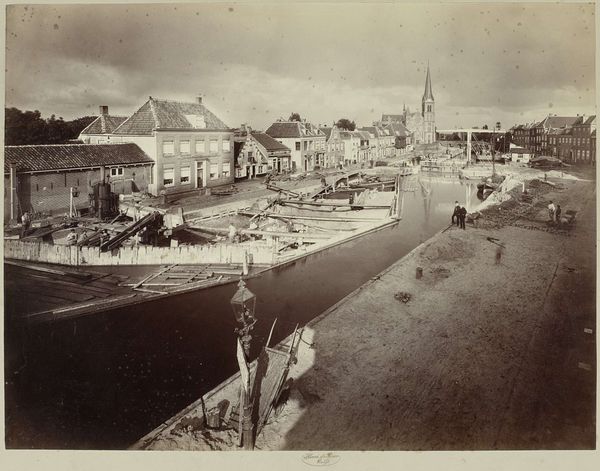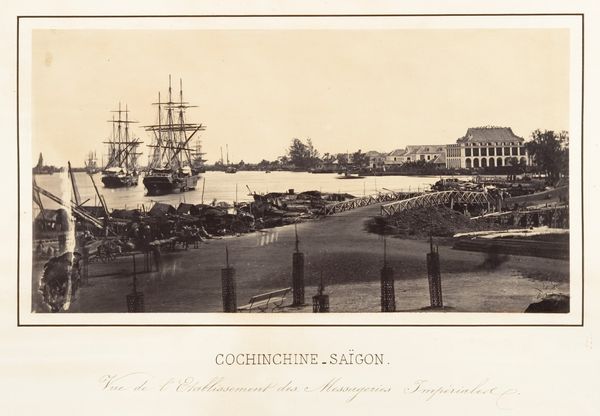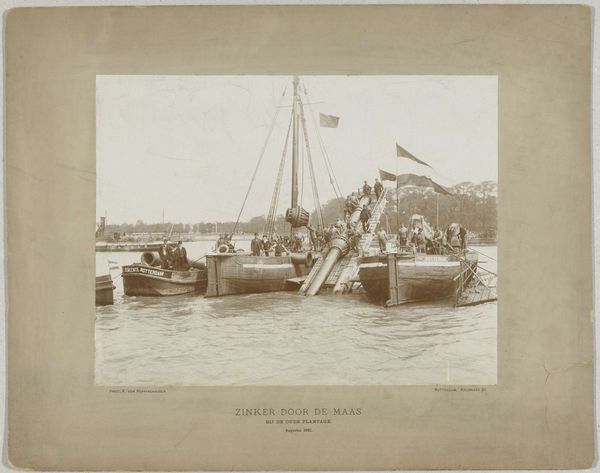
Vue de la Ville Chinoise (Cholen) Feuille No. 2, Saïgon, Cochinchine 1866
0:00
0:00
photography, albumen-print
#
asian-art
#
landscape
#
photography
#
historical photography
#
orientalism
#
19th century
#
cityscape
#
albumen-print
#
building
Dimensions: 22.3 x 30.4 cm (8 3/4 x 11 15/16 in.)
Copyright: Public Domain
Curator: Here we have Émile Gsell's "Vue de la Ville Chinoise (Cholen) Feuille No. 2, Saïgon, Cochinchine," a compelling albumen print from 1866. Editor: My first thought? What a beautifully still composition. The tones are sepia, imparting a quiet, reflective mood to this bustling riverside scene. It’s as if time stood still momentarily in Saigon. Curator: Indeed. Gsell, a Swiss photographer active in Southeast Asia, crafted this image through the albumen process. Think about the labor involved: coating paper with egg whites, sensitizing it with silver nitrate, exposing the negative, and then carefully developing and toning the print. Editor: And that labor is critical! This photograph isn't merely a neutral document. As part of France's colonial expansion, Gsell's work visualizes Saigon and its people for a European audience. Consider the very act of framing this Chinese quarter for Western consumption; there's an implied power dynamic at play. What narratives were omitted or amplified? Curator: Absolutely. We also need to think about access. The production and distribution of albumen prints allowed for mass reproduction, shaping Western perceptions of Southeast Asia, reinforcing colonial ideals, and impacting trade. How did those perceptions shape interactions with the raw materials, the natural resources of this place? Editor: And it becomes difficult to overlook the role of photography, and Gsell in particular, in justifying imperial control through visual rhetoric. Images like these were frequently exhibited at world fairs and circulated in publications to bolster the "civilizing mission." Curator: But if you consider the technical skill, you cannot dismiss the image for its inherent artistry. Editor: Of course. The skill is undeniable but we must consider all dimensions of impact—the hands involved in producing not just the photo but the world that it captures. It is far more than just light-sensitive material! Curator: Reflecting on it now, I realize this single image reveals how profoundly the material realities of artistic production are entangled with the politics of representation. Editor: Agreed. And I think it serves as a critical reminder that we must look at these colonial-era photographs through a multifaceted lens.
Comments
No comments
Be the first to comment and join the conversation on the ultimate creative platform.


